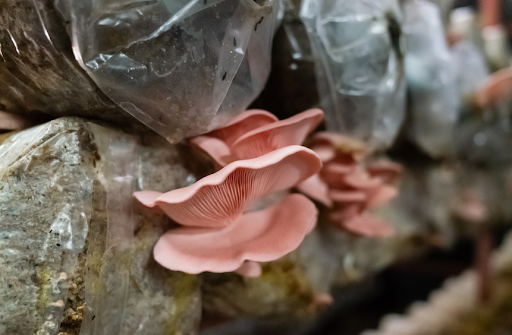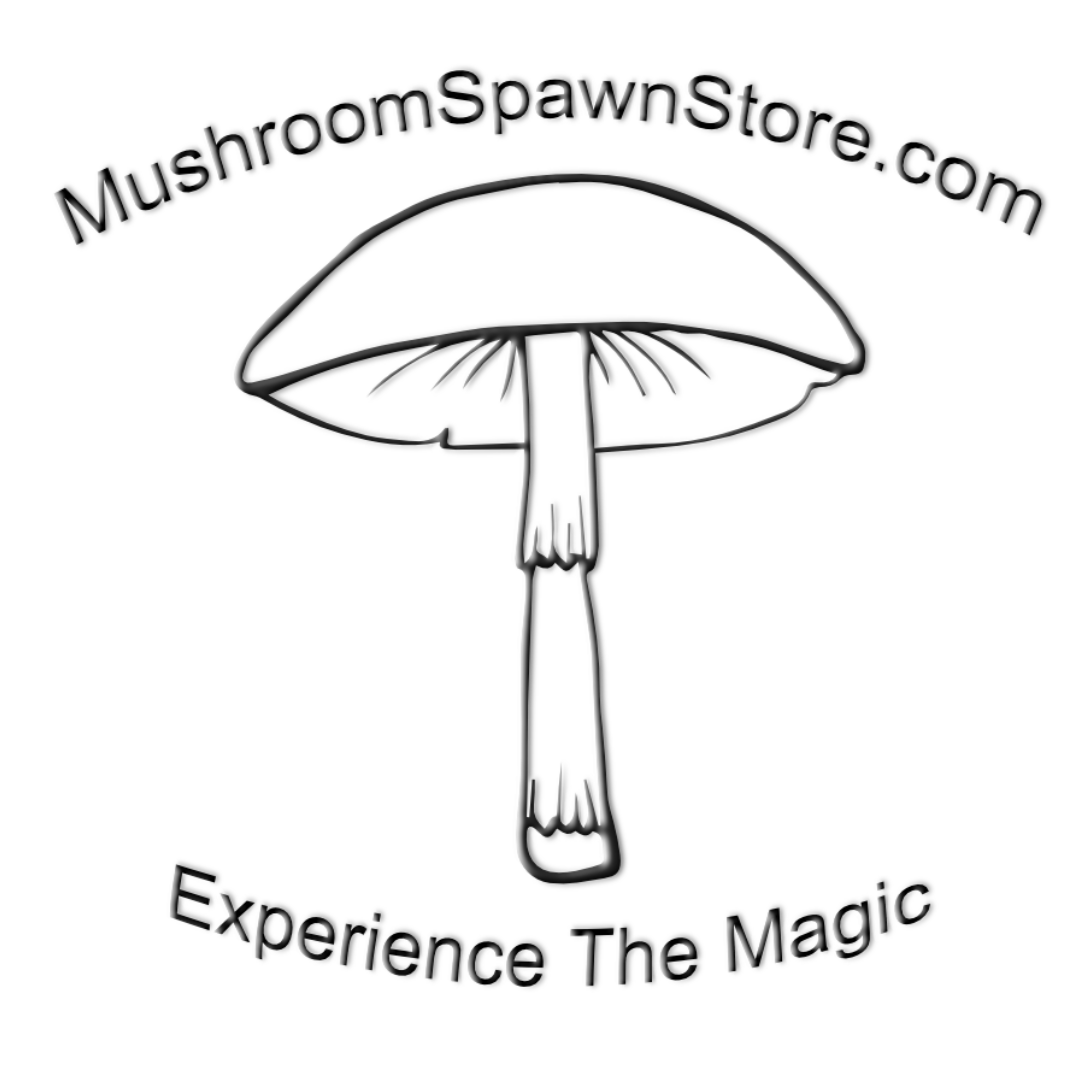According to the Agricultural Marketing Resource Centre, “specialty mushroom sales (like shiitake and oyster) have seen growth, with a 2% increase in sales in 2019-2020.” At Mushroom Spawn Store, we have a wide range of mushroom grow bags that suit your mushroom cultivation journey. We are here to explain the importance of grow bags in both home and commercial settings:
- What Are Mushroom Grow Bags?
- The Components of a Mushroom Grow Bag
- The Growing Process
- Advantages of Using an All-in-One Mushroom Grow Bag
- Common Mistakes and How to Avoid Them
- Reusing or Disposing of Mushroom Grow Bags
What Are Mushroom Grow Bags?
So, what are mushroom grow bags? Mushroom grow bags are specialized, sterilized bags used to cultivate a wide variety of mushrooms. There is a wide range of mushroom grow bags, including:
Why do people choose mushroom grow bags over other methods?
Due to their specialized design, each bag reduces the level of contamination, meaning they are clean to use. Mushroom grow bags are also heat-resistant and can have a major influence on the scalability of your mushroom crop.
Components of a Mushroom Grow Bag
There are three main components of a mushroom grow bag, which we’ll cover in more detail below:
The Bag Material & Filter Patch
These are crucial to a successful mushroom cultivation. The mushroom bag material needs to be heat-resistant to ensure sterilization and durable enough to withstand the growing process. The filter patch needs to be able to allow for essential gas exchange, ensuring that enough oxygen can be used for the mycelium to grow.
Sterile Substrate
These substrates are important as they prevent contamination and unwanted microorganisms, such as mold and bacteria, from growing. Sterile nutrient-rich substrates such as sawdust, straw, and grain are great options.
Mushroom Spawn
Typically made from rye or millet, the grain spawn - the mushroom spawn is important as it is the initial source of mycelium that colonizes the substrate and creates a mushroom.
The Growing Process
Inoculation
Your first question might be: but, how do I use mushroom grow bags? We have the answers. The first step in the process of cultivating your mushrooms at home is to add the mushroom spawn to the mushroom substrate. To do this, you must inject a sterile grain spawn bag with either a liquid culture or a spore syringe - this ensures a sterile environment throughout the entire mushroom growth process.
Top Tip: To ensure an even distribution, you can shake or mix the bag.
Ensure that you have sealed the mushroom grow bag to prevent mushroom contamination.
Colonization
During the colonization stage, mycelium should start to grow through the mushroom substrate. To ensure that you have created the correct environment for mushroom growth, you should keep track of:
- Temperature - the optimal temperature for mushroom growth is determined by the types of mushroom species; however, mushroom growth is best at 59°F and 75°F.
- Light levels - mushrooms do not need light for energy, unlike other plants; however, the tone of light is important. Blue light plays a crucial role in mushroom growth; in particular, a cool white or blue spectrum light of around 65000K to 9000K is recommended.
- Humidity levels - high humidity levels are best for mushroom growth. The key to creating this humidity level is to ensure that you are regularly misting your mushroom when it is about to fruit.
Throughout the end of the colonization stage, you should start to see visual signs of mushroom fruiting. These are the visual clues you can look out for:
- A network of thread-like hyphae
- Formation of ‘pins’, which are small mushroom buds
Fruiting
Once you have seen significant mushroom growth in your mushroom grow bag, you can start the fruiting process. Firstly, you can cut the top section of the bag just below the heat seal. Once this has been cut open, you can leave the neck of the bag loosely folded - this allows a small amount of oxygen to enter and traps the humidity inside.
Once your mushrooms are fully grown, you can harvest mushrooms. When the fresh mushroom caps have flattened, you can remove all of your mushrooms at once.
The best way to harvest your mushrooms is by gently twisting each mushroom off at the base of the stem - this ensures 0 breakage.

Advantages of Using an All-in-One Mushroom Grow Bag
There are many advantages of all-in-one mushroom grow bags, they are as follows:
-
Contamination control
Mushroom grow bags are effective for contamination control due to their filter patches, which allow for gas exchange.
-
Space efficiency
Due to their compact size, mushroom grow bags allow for vertical stacking and can be stored in smaller spaces such as a laundry room or pantry.
-
Easy observation of growth
Depending on the material of the grow bag, if they are made from a clear material, you can easily observe the growth of mushrooms inside the bag.
-
Suitable for beginners and experienced growers
Our mushroom grow bags are suitable for all mycophiles, from beginners to expert growers. The reason that they are great for beginners is due to their sterilized substrate that is already sealed in the bag; this means that they are less likely to be contaminated.
Common Mistakes and How to Avoid Them
From overwatering to poor air exchange, there is a wide range of common mistakes that you can easily avoid, even if you are a beginner.
- Overwatering or under-hydration - to avoid overwatering, do not let water build up within the bag and ensure that any standing water has been poured away.
- Contamination signs - to avoid contamination, focus on sterile techniques such as maintaining a clean environment. Make sure that you are regularly inspecting your grow bags for any discoloration, fuzzy growth, and unusual odors.
- Poor air exchange or the wrong substrate - avoiding poor air exchange is easy if you ensure that the ventilation holes are not obstructed by any other external factors.
Reusing or Disposing of Mushroom Grow Bags
Technically, grow bags can be reused; however, we would not recommend reusing your mushroom grow bag due to the increased risk of contamination and the likelihood of a weakened bag.
If you can’t reuse your mushroom grow bag, how do you dispose of your mushroom grow bag ethically?
- Remove the substrate - you can either choose to use it as compost, or you can use it as mulch.
- Dispose of the mushroom bag - if you check your mushroom bag, it should tell you whether it is recyclable or not. If the mushroom bag is made from polypropylene plastic, you can recycle it. If the bag is not recyclable, ensure that you dispose of the bag in your regular trash.
Start Your Mycology Journey With Mushroom Spawn Store
Now that you know how mushroom grow bags work, you can start your mushroom cultivation journey! Growing mushrooms at home is easy, and you are likely to be rewarded if you follow our top tips.
You can buy all of your DIY mushroom growing supplies and mushroom grow bags at Mushroom Spawn Store today, plus we offer free shipping across the USA.




